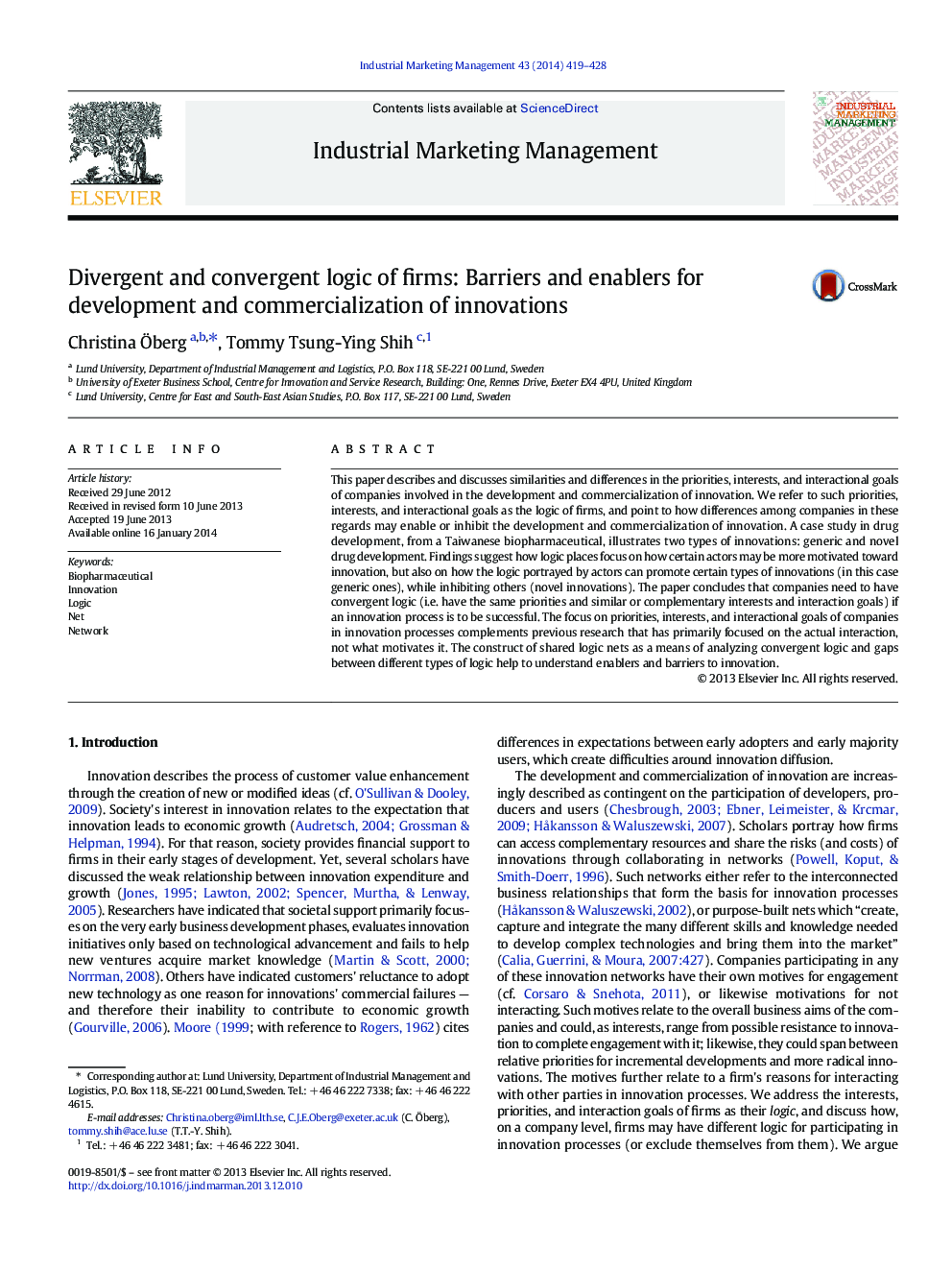| Article ID | Journal | Published Year | Pages | File Type |
|---|---|---|---|---|
| 10496152 | Industrial Marketing Management | 2014 | 10 Pages |
Abstract
This paper describes and discusses similarities and differences in the priorities, interests, and interactional goals of companies involved in the development and commercialization of innovation. We refer to such priorities, interests, and interactional goals as the logic of firms, and point to how differences among companies in these regards may enable or inhibit the development and commercialization of innovation. A case study in drug development, from a Taiwanese biopharmaceutical, illustrates two types of innovations: generic and novel drug development. Findings suggest how logic places focus on how certain actors may be more motivated toward innovation, but also on how the logic portrayed by actors can promote certain types of innovations (in this case generic ones), while inhibiting others (novel innovations). The paper concludes that companies need to have convergent logic (i.e. have the same priorities and similar or complementary interests and interaction goals) if an innovation process is to be successful. The focus on priorities, interests, and interactional goals of companies in innovation processes complements previous research that has primarily focused on the actual interaction, not what motivates it. The construct of shared logic nets as a means of analyzing convergent logic and gaps between different types of logic help to understand enablers and barriers to innovation.
Related Topics
Social Sciences and Humanities
Business, Management and Accounting
Marketing
Authors
Christina Ãberg, Tommy Tsung-Ying Shih,
